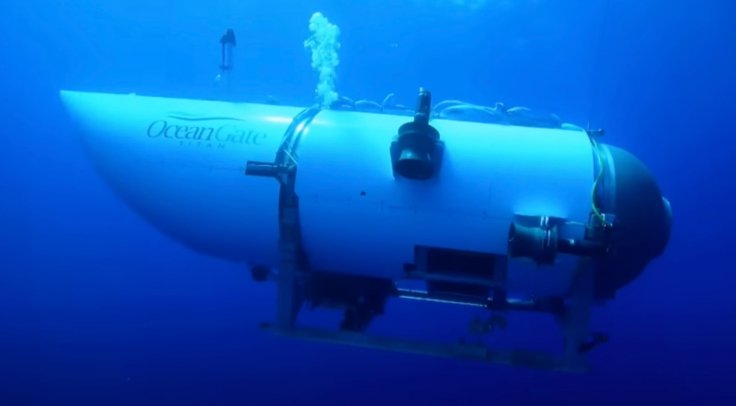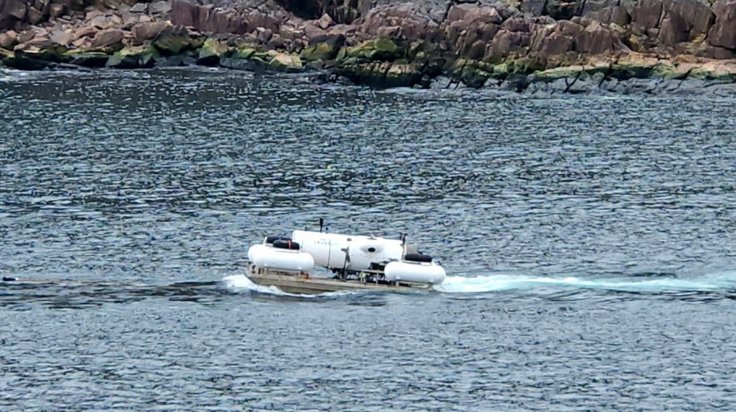The five people aboard the Titanic-bound submersible, currently missing under the sea, are likely experiencing not only a frightening ordeal but also discomfort, according to experts. The harsh conditions and limited resources in the deep ocean can contribute to an uncomfortable situation for those trapped inside the submersible.
In a recently published scientific paper in a medical journal, Dr. Dale Molé, the former director of undersea medicine and radiation health for the US Navy, discussed the "hostile" environment experienced onboard commercial submersibles. The paper highlighted various challenges faced by passengers, including diminishing oxygen supplies, elevated levels of toxic carbon dioxide, and rapidly dropping temperatures.
Fighting for Survival

These factors contribute to the inhospitable conditions that can further intensify the difficulties and risks for people aboard submersibles in deep-sea environments.
Other experts also say that life inside the submersible is challenging. "From what I understand, the vessels are not designed for long-range, multi-day excursions," John Mixson, a retired US Coast Guard lieutenant commander, told Fox News.
"So it's going to be a very, very uncomfortable, dark experience with a lot of hope and prayers," Mixson said.
The missing vessel, Titan, is expected to be equipped with a carbon dioxide scrubber, which helps remove the excess toxic gas that accumulates when passengers exhale in the confined space of the submersible.

However, it should be noted that in most submersibles, the capacity of the carbon dioxide scrubber is limited. This means that over time, as the occupants exhale and carbon dioxide levels rise, the effectiveness of the scrubber may deteriorate, potentially leading to increased concentrations of carbon dioxide in the enclosed environment, according to the paper published by Molé.
Indeed, the depths of the ocean present a risk of hypothermia due to the low temperatures. The prolonged exposure to cold water can cause a drop in body temperature and potentially lead to hypothermia among the passengers trapped in the submersible.
Dr. Molé's paper was published in a scientific journal on May 29, just 20 days before the unfortunate incident involving the Titan vessel, which lost contact with its mothership and left five people trapped.
As per the latest information provided by the US Coast Guard, the submersible has approximately 40 hours' worth of oxygen remaining.

Dr. Molé, who spoke to the Daily Mail on Tuesday, emphasized that it is "very much" a race against time to rescue the passengers, considering the potential risks they face, including the possibility of a catastrophic rupture of the pressure vessel.
The watercraft, operated by OceanGate Expeditions, was reported missing after it did not return to the Canadian research ship from which it was launched on Sunday morning. The crew lost contact with the captain of the watercraft, leading to concerns about its whereabouts and the well-being of those on board. The incident prompted a search and rescue operation to locate the missing watercraft and its crew.
"It's hard to say whenever you just lose total communications in a situation like that what actually happened until you find the vessel," Mixson told Fox News.
"This isn't a common occurrence at all."

"Obviously, something very rapid and very tragic took place," he added.
Hopes of Survival Grow
Search-and-rescue teams continue with their frantic efforts to locate the lost vessel as hours pass. The remaining supply of life-sustaining oxygen inside the submersible continues to decrease, having started at 96 hours since 6 am on Sunday.
The dwindling time frame adds urgency to the rescue operation as every passing hour becomes critical in finding the vessel and its occupants before their oxygen supply runs out.
"I would say it is extremely serious. It's a dire situation," Mixson said.

"But on the other side of that fact, it is still considered classified as a search-and-rescue mission, which should give everyone hope, including the family members and friends of the people on board the vessel."
This comes as reports claimed on Tuesday night that rescue groups reported "likely signs of life" and "banging sounds" near the wreck of the Titanic.
A Canadian aircraft taking part in the extensive search effort to find the missing Titanic tourists reported "banging" in the region where the submarine vanished at intervals of 30 minutes. The Daily Mail reported that the sounds of banging were also mentioned in emails written to the US Department of Homeland Security and obtained by Rolling Stone.
"There is cause for hope," The Explorers Club President Richard Garriot de Cayeux wrote in a social media post on Tuesday night. "We have much greater confidence that 1) There is cause for hope, based on data from the field - we understand that likely signs of life have been detected at the site," he wrote in a statement.

The exact timing of the banging sounds remains uncertain, and there is no official confirmation or information regarding the finding of the crew that has been trapped in the depths of the Atlantic Ocean since their submersible set off on Sunday and subsequently lost communication with the surface, the outlet reported.
"RCC Halifax launched a P8, Poseidon, which has underwater detection capabilities from the air," the DHS memo on the banging sound read, "reported a contact in a position close to the distress position.
"The P8 heard banging sounds in the area every 30 minutes. Four hours later additional sonar was deployed and banging was still heard."
The document doesn't specify the reason or date of the banging.
Garriot de Cayeux added that the U.S. Coast Guard "precisely understands the experienced personnel and tech we can deeply," and "believes they are doing everything possible with all resources they have."

According to reports, the people who are believed to be trapped in the submarine are billionaire Hamish Harding, French explorer Paul-Henri Nargeolet, OceanGate CEO Stockton Rush, Shahzada Dawood (a 48-year-old UK-based board member of the Prince's Trust charity), and his son Sulaiman Dawood, 19.
Rear Admiral John Mauger, involved in coordinating the search operation, has indicated that there is a possibility that the submersible may be trapped or stuck.
"We don't have equipment onsite that can do a survey of the bottom," Mauger said on Tuesday.
"There is a lot of debris, so locating it will be difficult. Right now, we're focused on trying to locate it."
However, the main issue is that Titan can no longer transmit signals, making it almost impossible to locate the vessel. The last sonar 'ping' it was scheduled to send to the mothership Polar Prince was at 9.45 am on Sunday, an hour and 45 minutes into the dive when it was floating directly above the Titanic (radar and GPS are not functional underwater).
It has been reported that OceanGate Expeditions, the company responsible for organizing tours of the Titanic, took approximately eight hours before notifying the coastguard about the situation on Sunday.
The incident was reported to the US Coast Guard at 5:40 pm, while Canada's Coast Guard was alerted even later, at 9:13 pm. The delay in notifying the coastguard authorities has raised concerns and questions regarding the handling of the situation and the timeliness of the response.








